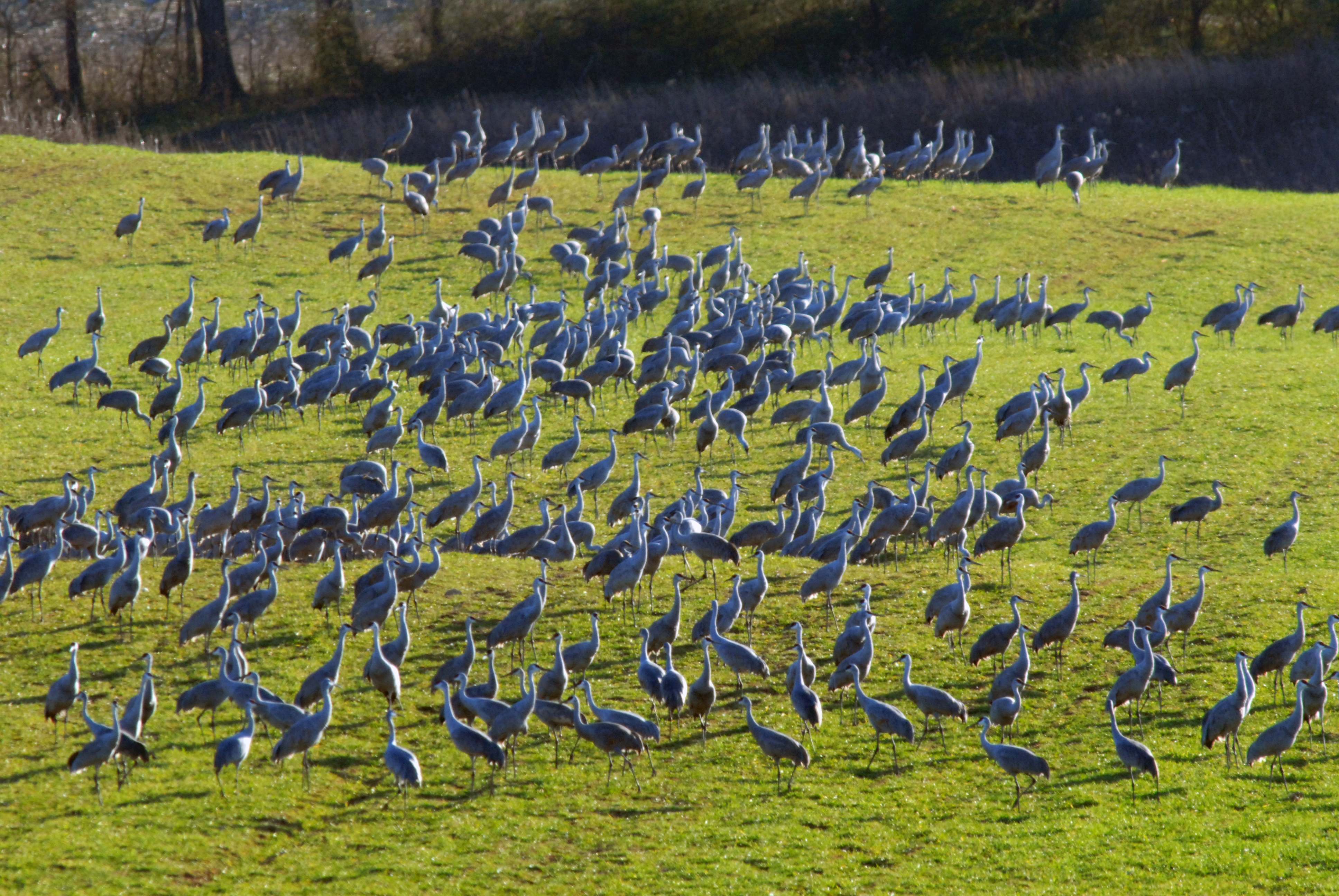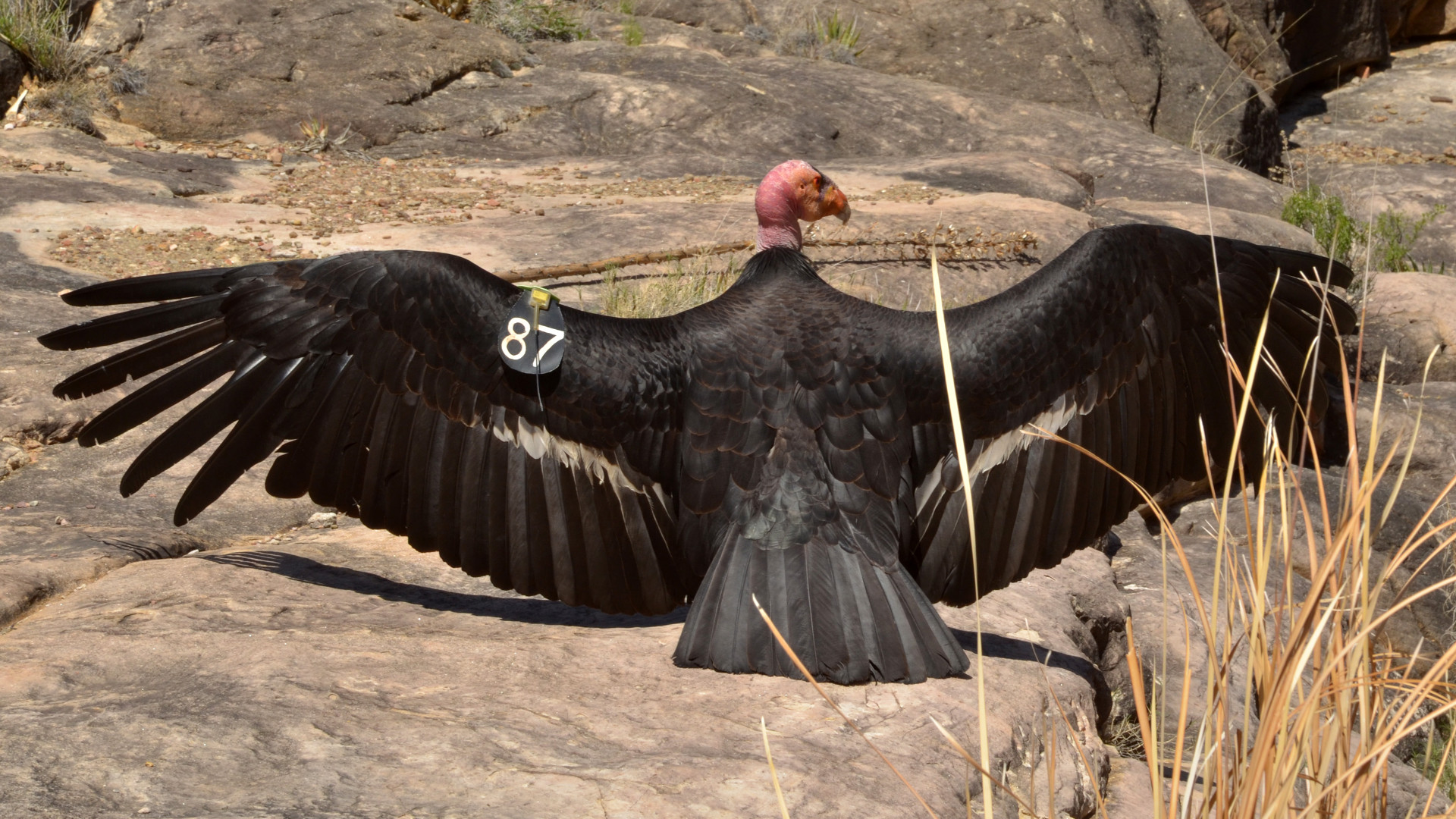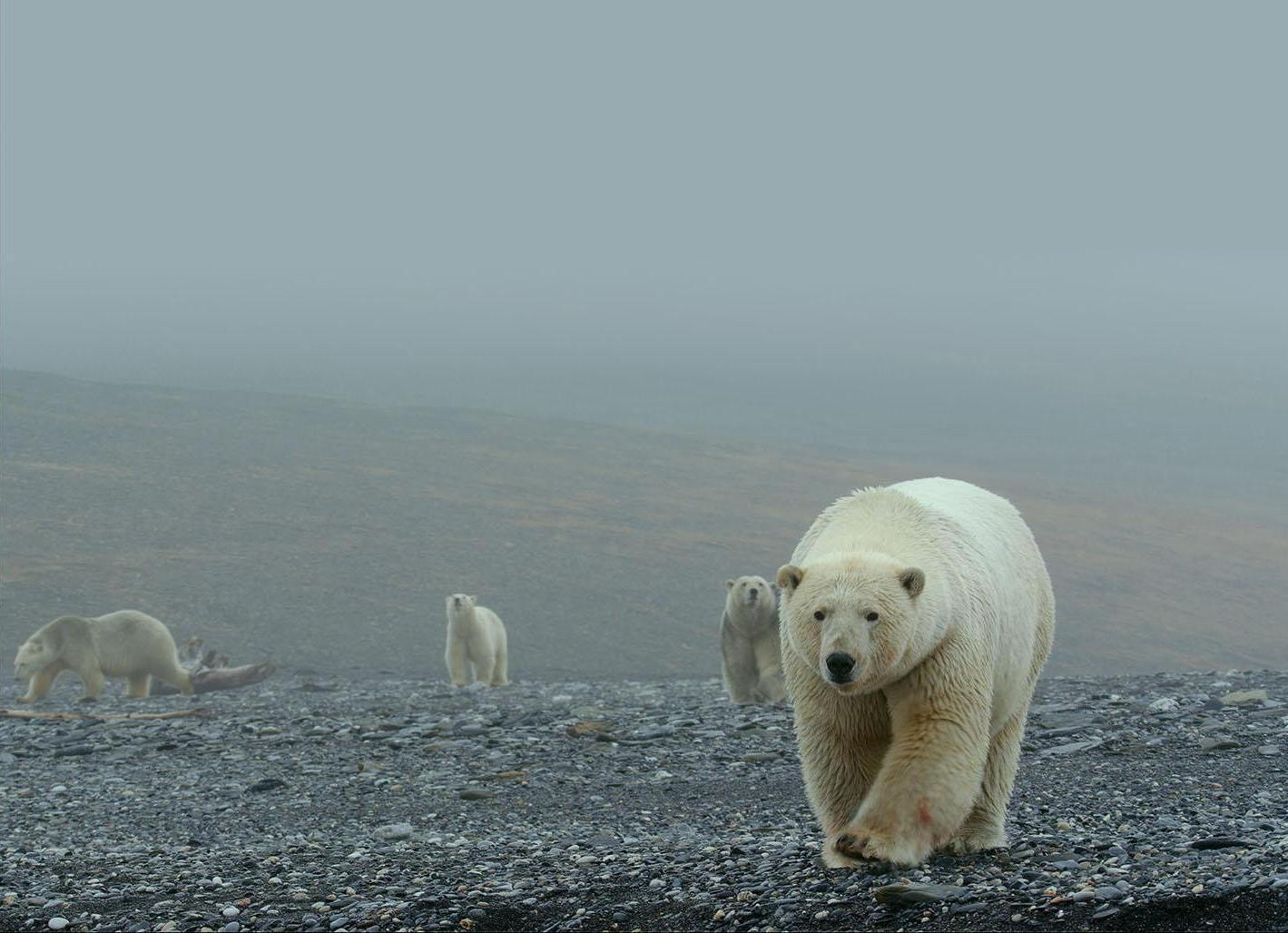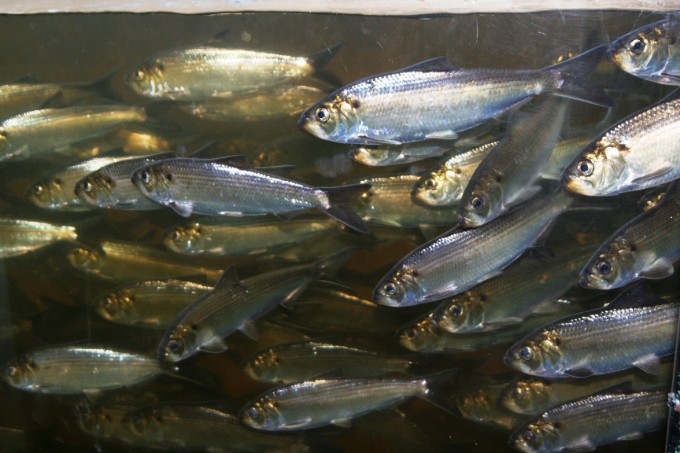News (799)
Children categories
ES! Initiatives (74)
EarthSolidarity!™ Initiatives are endeavors to which anyone can contribute in deed as well as in spirit, that
- minimize waste and environmental impacts
- increase community resilience
- respect and protect ecosystem processes and all forms of life
- contribute to good living conditions for everyone around the globe
- affirm and celebrate our interdependence and interrelatedness in the Web of Life!
Rangers probe suspected arson in Great Smokies
GATLINBURG — The National Park Service is investigating a possible arson fire off Laurel Creek Road near Crib Gap Trail. The fire was extinguished, but as part of the investigation, rangers are requesting the public’s help to find anyone who was in the area of Crib Gap Trail, Anthony Creek Trail or Lead Cove Trail Feb. 6 at about 6 p.m.
If you have information about vehicles or suspicious activity in the area around 6 p.m. on Tuesday, Feb. 6, please submit a tip. You don’t have to tell us who you are, but please tell us what you know. Rangers also ask that the person who originally reported the fire calls the number below as soon as possible.
CALL: 888-653-0009 or 865-436-1230
— National Park Service
Sequoyah Hills is now officially the arboretum we always shared
Written by Ben Pounds Many such new identifying tags highlight trees such as this red cedar in the newly designated Sequoyah Hills Arboretum near Bearden in Knoxville. Ben Pounds/Hellbender Press
Many such new identifying tags highlight trees such as this red cedar in the newly designated Sequoyah Hills Arboretum near Bearden in Knoxville. Ben Pounds/Hellbender Press
The arboretum designation will allow for more extensive tree walks, scout projects, school outings, and other educational programs on the value and beauty of native trees
KNOXVILLE — A small crowd of volunteers with tags and tools descended on Sequoyah Park on a February afternoon, preparing to affix identifying labels to the bark of old trees in one of the city’s most storied neighborhoods.
Sequoyah Park sits along the Tennessee River at 1400 Cherokee Boulevard, tucked behind the Sequoyah Hills neighborhood but open to all who want to run, walk, cycle, or enjoy its open fields and other features. It’s Tennessee Valley Authority land, maintained by the city. The many species of native trees that tower over the park’s long field got recognition this year. The park and other Sequoyah Hills neighborhood areas are now part of the Sequoyah Hills Arboretum, an accredited level one ArbNet arboretum.
Celebrate Black Appalachian roots at spring fish fry

WHITESBURG — Join Black in Appalachia supporters and friends for a fish fry, live music and fellowship at its field office in Whitesburg, Tenn.
The homecoming is set for 1-8 p.m. April 20 at 8004 Andrew Johnson Highway.
The first Black in Appalachia Homecoming is meant to celebrate friends, families and coworkers near and far on the commemoration of setting roots in East Tennessee.
Black in Appalachia is a nonprofit that works with media, residents, universities, libraries, archives and community organizations to highlight the history and contributions of African-Americans to the development of the Mountain South and its culture.
TVA plans for Bull Run Fossil Plant site remain hazy
Written by Ben Pounds A public playground near the site of the since-decommissioned Bull Run coal plant in Claxton, Tenn. Tennessee Valley Authority is weighing options for the site’s future. Abigail Baxter/Hellbender Press
A public playground near the site of the since-decommissioned Bull Run coal plant in Claxton, Tenn. Tennessee Valley Authority is weighing options for the site’s future. Abigail Baxter/Hellbender Press
Solar production and public green space remain options; coal ash questions remain
CLAXTON — Tennessee Valley Authority will demolish most structures at Bull Run Fossil Plant but has not yet shared plans for the ultimate disposition or reuse of the property.
Bull Run Fossil Plant was a coal-fired plant in the Claxton community, located just outside of Oak Ridge in Anderson County, Tenn. The plant opened in 1967. TVA closed it in 2023, and plans to phase out all its coal fired plants by 203.
The utility and its spokesman Scott Brooks have listed the scrubbers, coal handling structures and the large chimney, nicknamed the “lighthouse” by locals, as structures that will likely come down.
TVA has listed some possibilities for the site, including battery storage, park areas, “economic development” and a synchronous condenser, which is a device meant to keep the overall grid's power supply stable without generating any power of its own. This last option would involve keeping and repurposing the turbine building. TVA has not committed to any of these ideas.
Learn how to leverage the feds for community improvement
KNOXVILLE — Representatives from the Federal Reserve Bank of Atlanta’s Community and Economic Development Program, a Community Affairs Officer from the U.S. Treasury Office of the Comptroller of the Currency, and members of the African American Equity Restoration Task Force will participate in a financial workshop.
The workshop is set for 11 a.m. Wednesday, January 31, at the Knoxville Public Works building at 3131 Morris Ave., and will last about two hours.
Topics are expected to include ways to potentially utilize the 1977 Community Reinvestment Act (CRA) for bank partnerships and other channels, improving homeownership, workforce equity, small business development, entrepreneurship and more.
John Nolt still examines the incomparable value of nature
Written by JJ Stambaugh Former University of Tennessee Professor John Nolt strolls through his garden during a recent conversation about his career as a philosopher and one of the Southern Appalachian region’s most respected environmental activists. J.J. Stambaugh/Hellbender Press
Former University of Tennessee Professor John Nolt strolls through his garden during a recent conversation about his career as a philosopher and one of the Southern Appalachian region’s most respected environmental activists. J.J. Stambaugh/Hellbender Press
Former UTK prof defends the environment, logically
KNOXVILLE — It’s hard to think of many figures in the local environmental movement who command the respect that former University of Tennessee Professor John Nolt has earned over the past four decades.
He has served as a leader, a teacher, and a repository of wisdom for thousands of students and activists. He’s authored eight books on environmental ethics and logic, and he was one of the main players in the struggle to force a cleanup of the notorious David Witherspoon Inc. site in South Knoxville.
While the 73-year-old philosopher’s formal academic career came to an end a couple of years ago, I feel privileged to report that he’s continued to add to his legacy. You see, it’s come to my attention that quite a few people are curious to know what he’s up to these days, and Hellbender Press agreed that I should chat him up.
Foothills Land Conservancy commits more land to memory
Written by Shelby Lyn Sanders
Generations have crisscrossed the expansive pastures near Cane Creek in Anderson County
Fighting our own worst enemy along the way to better seeds and systems
Written by Élan Young Tennessee Local Food Summit participants were encouraged to bring their favorite heirloom seeds for a seed swap and social. Courtesy Matt Matheson
Tennessee Local Food Summit participants were encouraged to bring their favorite heirloom seeds for a seed swap and social. Courtesy Matt Matheson
Tennessee Local Food Summit is a hive for food justice in the Southeast
NASHVILLE — About 70 miles north of Nashville in the town of Red Boiling Springs in Macon County, farmer and educator Jeff Poppen, better known as the Barefoot Farmer, runs one of the oldest and largest organic farms in Tennessee. For nearly 40 years, he built rich soil for his bountiful farm before the second-largest meat producer in the world forced him to move from the 250 acres he’d been farming since 1974.
When his neighboring property owner partnered with Cobb Vantress, a subsidiary of the multinational mega-giant Tyson Foods, to place a concentrated animal feeding operation (CAFO) — aka a factory farm — 450 feet from his homestead and garden, Poppen’s first instinct was to organize.
This self-described “dirty hippie” found unlikely allies in his neighbors — a Baptist preacher, a state trooper, a politician, and what he calls a “chemical farmer” — all opposed to an industrial chicken house moving in.
- tennessee local food
- jeff poppen
- barefoot farmer
- cobb vantress
- industrial farming tennessee
- tyson foods
- olivia cleveland
- southeast sustainable farmers
- long hungry creek
- cumberland university
- cafo
- industrial chicken farm
- native american indian association of tennessee
- feather smith
- seed commons
- tennessee local food summitt
- jim embry
- exceptional water of the state
- foodways
- natalie ashker seevers
- chris battle
- community garden
- food apartheid
- farmland loss
- heirloom seed
- seed bank
- ancestral crop
- cherokee nation
- cumberland seed commons
- food justice
- chris smith
- agrobiodiversity
- sustainable agriculture
- food system
- resilient community
- food mile
- regenerative farming
- local food movement
- battlefield farms
UPDATED: In much of Tennessee Valley, focus now turns to possible flooding as record snowpack rapidly recedes
Written by Thomas Fraser A child enjoys a snow day on the Norris Commons in the aftermath of the most potent snowstorm to affect the area since 1996. Abigail Baxter/Hellbender Press
A child enjoys a snow day on the Norris Commons in the aftermath of the most potent snowstorm to affect the area since 1996. Abigail Baxter/Hellbender Press
UPDATED 1/24: Focus turns to flooding as snow melts and heavy rains approach
30-year winter storm hits Tennessee Valley ahead of a vicious cold front
KNOXVILLE — A widespread and potent winter storm hit the central Tennessee Valley on Jan. 15-16, disrupting travel and commerce as residents grappled with the most significant snowstorm to hit the area in 30 years. Arctic air subsequently flooded the region Jan. 18-19 with lows in Knoxville hitting 0º.
As of Jan. 24, most snow had melted across the Knoxville area, washed away in part by moderate rain and temperatures in the 50s. A flood watch is in effect for most of East Tennessee through the evening of Jan. 25. Two to 3 inches rain could fall across the area, compounding runoff from melting snow, according to the National Weather Service.
At least 36 people died as a result of the winter storm in Tennessee.
Advance Knox plan gets policy committee approval; heads to other governing boards next
WATE: Knox County approves controversial Advance Knox plan in policy committee
KNOXVILLE — A Knox County growth plan advanced by Mayor Glenn Jacob’s administration was approved by the guiding committee behind Advance Knox.
Hellbender Press has reported and opined on the growth plan during its development. The plan was touted as a means of reducing sprawl and accompanying taxpayer-funded infrastructure.
Rural and suburban property owners remain dubious whether the proposed revamp of the original Knox County growth plan will control the countywide development encroaching on their land, according to reporting from WATE:
“Kevin Murphy doubles as an advisory committee member and resident of a rural area. He lives off of Washington Pike and said the area has already started morphing into a suburb.
“‘Today, there’s over 17,000 cars a day that pass by my farm. All this growth will increase that a lot and 17,000 cars a day is a pretty significant amount of noise, litter, light pollution, at all times of the hours, so the character is definitely changing,’ he said.”
The plan still needs to be approved by Knox County Commission, city of Knoxville and the town of Farragut.
RESCHEDULED: ETSPJ to host annual meeting with Knoxville members of the Tennessee state legislature
KNOXVILLE — The East Tennessee chapter of the Society of Professional Journalists (ETSPJ) once again will partner with the League of Women Voters Knoxville/Knox County (LWVKKC) to hold the annual legislative forum of the Knox County delegation.
The forum, which was postponed by snow, is now set for 9-10:30 a.m. Saturday, Feb. 17.
The event is set for the YWCA Phyllis Wheatley Center, located at 124 S. Cruze St., in East Knoxville near downtown. A parking lot next to the building and street parking are available.
Jesse Mayshark, an ETSPJ board member and co-founder of Compass Knox, will serve as moderator. The event is open to the public.
Like clockwork, it’s time to scope Sandhill cranes in East Tennessee
Written by Tennessee Wildlife Resources Agency During winter migration, visitors to Hiwassee Wildlife Refuge can view thousands of greater sandhill cranes. Tennessee Wildlife Resources Agency via Appalachian Voices
During winter migration, visitors to Hiwassee Wildlife Refuge can view thousands of greater sandhill cranes. Tennessee Wildlife Resources Agency via Appalachian Voices
Sandhill Crane Festival at Hiwassee Refuge set for Jan. 12-14 in celebration of the crane’s revival and survival
BIRCHWOOD — As many as 12,000 cranes have overwintered at the confluence of the Tennessee and Hiwassee rivers. Whether you’re an avid birder or you’ve never seen a Sandhill crane before, the Tennessee Sandhill Crane Festival represents an extraordinary opportunity to witness a truly unforgettable natural phenomenon.
Experience the migration of the Sandhill cranes and many other waterfowl, eagles, white pelicans and whooping cranes. The entire region buzzes with birds and birdwatchers alike.
The festival will be held from 8 a.m. to 4 p.m. Jan. 12 – 14. Free buses run the short distance from the Birchwood Community Center to the Hiwassee Refuge and Cherokee Removal Memorial. Volunteers are set up at each location for birders and curious visitors alike.
- celebration of cranes
- twra
- hiwassee river
- confluence of the tennessee and hiwassee rivers
- cherokee removal memorial
- sandhill crane
- sandhill crane festival
- sandhill crane recovery
- hiwassee refuge
- john james audubon
- brian fox ellis
- sandhill crane migration
- sandhill crane wintering
- hopin refuge
- meigs county, tn
From Lil Jefe to hellbenders, wild animals inspired hope and validation for the conservation of the world in 2023
Written by Tim Lydon In September, six California condors repeatedly ventured north from their Pinnacles National Park homeland to Mount Diablo in the San Francisco Bay area, becoming the first condors seen in that area in over a century. Biologists speculate the sorties may indicate new nesting territories. Seen here is a condor deemed California condor 87 by biologists tracking the rare bird population. Michael Quinn/National Park Service
In September, six California condors repeatedly ventured north from their Pinnacles National Park homeland to Mount Diablo in the San Francisco Bay area, becoming the first condors seen in that area in over a century. Biologists speculate the sorties may indicate new nesting territories. Seen here is a condor deemed California condor 87 by biologists tracking the rare bird population. Michael Quinn/National Park Service
Rare and threatened animals used innate skills and courage to recover lost territory, expand their ranges, or simply survive against the odds. Humans helped.
It’s tradition to honor the past year’s human achievements. From peacemakers and scientists to athletes and artists, we celebrate those who inspire us. But what about the wildlife who surround us who make up the biodiversity that sustains us? Each year standout members of those populations also set records and push boundaries, many with lasting results.
Consider P-22, also known as the “Hollywood cat.” In 2012 this young mountain lion surprised biologists and captured hearts by establishing a decade-long residency in the Griffith Park area of Los Angeles. Stealthily threading through backyards and freeways, he demonstrated the value of landscape connectivity, even in urban areas. And though he died in 2022, he inspired a massive fundraising campaign that helped build the largest wildlife bridge in the United States, to be completed in 2025 over California’s 10-lane Highway 101. In this way he changed the world.
- wildlife conservation
- ozark hellbender
- california condor
- tim lydon
- the revelator
- prince william sound stewardship foundation
- hollywood cat
- mountain lions
- ocelots
- grizzlies on the great plains
- endangered species act
- missouri river breaks
- wolverines endangered species act
- american prairie
- wolves in southern sierras
- flamingos
- hurricane flamingoes
- huachuca mountains
- saint louis zoo
- okaloosa darter
RESCHEDULED: Mudchasers wanted: Sign up to track pollution and sediment pumps

KNOXVILLE — Join Chris Irwin and others to learn how to help track the origin of sediments and other pollutants in area waterways.
The meeting was postponed by snow and is now set for 7 p.m. Jan. 24 at Barleys, 200 East Jackson Ave., Knoxville.
“Spring is coming and with it rain and mud into the creeks and streams around Knoxville. We think a handful of people working together can stop a lot of mud going into the Tennessee River.
Visit the Arctic at Tennessee Aquarium in Chattanooga. While you still can.
Written by Doug Strickland Polar bears on Wrangel Island, Russia. As the sea ice melts each summer, more than 1,000 bears come to Wrangel to wait for the return of the sea ice. It's the largest concentration of polar bears on Earth. BBC Studios via Tennessee Aquarium
Polar bears on Wrangel Island, Russia. As the sea ice melts each summer, more than 1,000 bears come to Wrangel to wait for the return of the sea ice. It's the largest concentration of polar bears on Earth. BBC Studios via Tennessee Aquarium
Learn how the Arctic still thrives in the face of existential climate threats in new IMAX film
Doug Strickland is a writer for the Tennessee Aquarium.
CHATTANOOGA — At first glance, the Arctic seems an impossibly inhospitable place, a frigid wasteland of extremes in which nothing can survive.
Only one-quarter of this vast polar region at the top of the world is made up of land. The rest is comprised of a glacially cold ocean capped by vast stretches of ice.
Despite its harsh conditions, life has found a way to endure — and even thrive — in the Arctic. Audiences will meet just a few of the Arctic’s charismatic residents on Jan. 11, 2024 when the Tennessee Aquarium IMAX 3D Theater debuts a new giant-screen film, Arctic 3D: Our Frozen Planet.
More...
Fish are featured this month at Conservation on Tap
 Barrens topminnow (Fundulus julisia) at Conservation Fisheries, a native stream fish breeding center. This species is endangered (IUCN). It is only found in the Barrens Plateau in Middle Tennessee, making it one of the rarest fish in eastern North America. © Joel Sartore 2023
Barrens topminnow (Fundulus julisia) at Conservation Fisheries, a native stream fish breeding center. This species is endangered (IUCN). It is only found in the Barrens Plateau in Middle Tennessee, making it one of the rarest fish in eastern North America. © Joel Sartore 2023
KNOXVILLE — The next round of Conservation on Tap features Conservation Fisheries and its efforts to restore and conserve some of the most diverse fish populations on the planet.
It’s set for 7 p.m. Jan. 10 at Albright Grove Brewing Company, 2924 Sutherland Ave. Proceeds from the event benefit Discover Life in America, a crucial science partner with Great Smoky Mountains National Park.
“Did you know the incredibly diverse Tennessee River harbors over 225 species of fish, including more than 50 species at risk of extinction? Come join staff from Knoxville nonprofit Conservation Fisheries Inc. to learn about CFI's mission to prevent the extinction of rare fish species, and to work for their long-term recovery. We will be discussing some of our successes in fish recovery efforts over the past 37 years, including species found in Great Smoky Mountains National Park.”
Big South Fork NRRA celebrates 50th anniversary

New Year’s Day 2024: Mail Run bike ride
ONEIDA — Big South Fork National River & Recreation Area will commemorate its first 50 years with a year-long celebration in 2024. The park will recognize those who have played a pivotal role in making this special place what it is today.
Big South Fork prepares a year of honoring the past, celebrating today and planning for the future. “The story of Big South Fork is not finished. We are excited to engage with the community as we look forward to the next 50 years,” said Superintendent Niki Stephanie Nicholas.
As the new year approaches, there is a lot in store, from the installation of dozens of brand-new interpretive waysides and information boards — found at trailheads, parking lots and other points of interest throughout the park — to a completely overhauled official park map and guide, special events, ranger-led programs and incredible social media content, just to name a few.
Big South Fork’s 50th anniversary activities start with a celebration at Bandy Creek Visitor Center on Monday, Jan. 1, at 10 a.m., where mountain bikers are invited to ride the annual “Mail Run” event.
This ride is traditionally called the Mail Run because it occurs every year, no matter the weather. Just remember to BYOB (Bring Your Own Bike). The Mail Run consists of a choice of rides from 8-35 miles so bikers can pick the group ride of a length they are most comfortable with. Hot chocolate and coffee will be available at Bandy Creek Visitor Center before the rides start.
TWRA fisheries and crayfish expert retires after four decades of service
Written by Tennessee Wildlife Resources Agency Carl Williams, a TWRA fisheries technician and self-taught crayfish biologist. TWRA
Carl Williams, a TWRA fisheries technician and self-taught crayfish biologist. TWRA
MORRISTOWN — Carl Williams, a Tennessee Wildlife Resources Agency fisheries technician and self-taught crayfish biologist retired after dedicating more than four decades to wildlife and fisheries conservation and management.
Williams began working with TWRA in August 1979 through the Young Adult Conservation Corp (YACC), which was a federally funded program. Initially hired for a one-year assignment, he worked with lands management wildlife biologists on various projects, including white-tailed deer and wild turkey restoration.
The subsequent year marked a shift as he joined TWRA’s Fisheries Division, conducting creel surveys on Cherokee and Douglas reservoirs. In August 1981, he transitioned to the Buffalo Springs Trout Hatchery spending the next seven years propagating and rearing rainbow, brown, brook, lake and Ohrid trout, and distributing them throughout many streams, rivers and reservoirs in East Tennessee.
The Revelator: 10 ways targeted dam removals can help solve the climate change dilemma
Written by Gary Wockner Alewives returned by the millions after the Edwards and Ft. Halifax dams were removed in Maine. John Burrows/ASF via The Revelator
Alewives returned by the millions after the Edwards and Ft. Halifax dams were removed in Maine. John Burrows/ASF via The Revelator
By providing both mitigation and adaption, dam removal can lower greenhouse gas emissions and restore carbon sinks.
This article was originally published in The Revelator. Gary Wockner
As the climate crisis escalates, a huge amount of attention and money is being focused on climate solutions.
These can be divided into two categories: solutions that pursue “mitigation,” which lowers greenhouse gas emissions, and those that pursue methods to adapt to climate impacts to increase human and ecological resiliency.
Dams, of course, create enormous environmental harms, many of which have already been described in scientific literature. Equally well documented is the fact that removing dams can restore seriously damaged ecosystems. But missing from almost every climate-solution story and study is how dam removal can be key for both mitigation and adaptation.
Here are 10 reasons how dam removal fights climate change.
- climate action
- dam removal
- the revelator
- gary wockner
- greenhouse gas emission
- methane emission
- natural flow of the river
- river plume
- carbon sink
- reservoir
- biodiversity
- sediment transport
- fish population dynamic
- water supply
- reservoir evaporation
- climate resilience
- heat island
- forest cooling effect
- river cooling effect
- climate crisis
- lake mead water level
- colorado river water restriction
